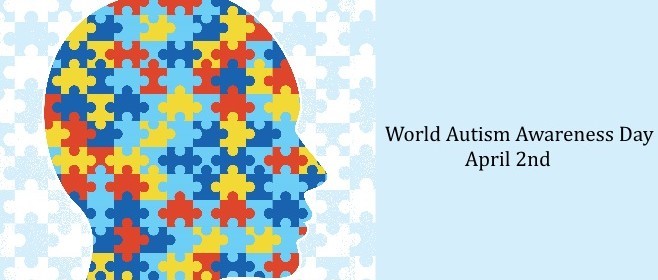World Autism Awareness Day 2016

April 2nd was celebrated as World Autism Awareness Day. This year’s theme was “Autism and the 2030 Agenda: Inclusion and Neurodiversity.” The United Nations through this theme has stressed on the need to mainstream disability in the organization’s development agenda through quality education, decent work and economic growth and reduced inequalities to name a few.
Let us understand first a little more about the Autism Spectrum Disorder. It is a basically a developmental disability that is visible from early childhood and can restrict a person’s interaction with the outside world. Autism is called a spectrum disorder mainly because it affects people in a variety of ways. An autistic person will see, hear and feel the world in a different way from others. The problems that autistic people face may vary from over or under sensitivity to sound, touch, speech to learning disability and even Asperger Syndrome in which one has difficulties with understanding and processing language.
It is not like any other illness or disease that has a cure.
Diagnosis
There are three main indicators from which a person with autism can be identified. These are:
1) Restricted and Repetitive behavior: It is difficult for an autistic person to take a different approach or adjust to a change once they are used to a certain kind of routine.
2) Difficulty in social interaction: An autistic person may find it difficult to understand a person’s feelings or emotions or even expressing their own. Thus, it may be difficult for them to form friendships, or even interact with anyone around.
3) Difficulty with communicating: An autistic person will have difficulty grasping both verbal and non-verbal communication. Due to their limited speech, though they might understand what others say to them, they are unable to speak back. They may even use sign language or visual symbols to communicate their feelings.
Treatment
For an autistic person to develop to their full potential, early diagnosis and treatment helps. As symptoms, behavior, family resources vary from people to people; treatment is customized on an individual basis.
According to the American Association for Pediatrics, the following treatment strategies can help an autistic person to improve overall and reach his potential:
1- Behavioral training and management: This treatment method uses self-help, positive reinforcement, and social skills training to improve behavior and communication
2- Specialised Therapies: This includes speech, occupational and physical therapy. While speech therapy can help improve a child’s communication and make him communicate effectively, occupational and physical therapy helps improve motor and coordination skills, and process sensory information.
3- Medicines: These are used to treat either related conditions or behavioural problems such as depression, hyperactivity, anxiety etc.
Here is how you can support people with autism and create an inclusive society:
– Use clear language and be as direct as possible.
– Wait for the person to process the information.
– Do not use words that having multiple meanings.
– Follow a routine that the person will relate to.
– Keep the environment as calm as possible.
– Listen to them carefully and respect their repetitive behaviour.
– Do check with parent or guardian about any other support that they may need.
Reference:
http://www.un.org/en/events/autismday/
https://www.autismspectrum.org.au/content/what-autism
http://www.autism.org.uk/about/what-is/asd.aspx
http://www.autism-society.org/what-is/
